As there is always someone at the house with my mom, we have not yet needed a medical alert system. But for the elderly who are often alone, a medical alert system can be very reassuring to have, the but not very cheap to have, especially if there are monthly payments.
Does Medicare cover medical alert systems ? Medicare Part B does not typically cover medical alert systems for use in the home, as they are not primarily medical in nature. But some Medicare Advantage plans do include a medical alert system in their plan.
Although Medicare doesn’t typically cover medical alert systems, this does not mean that it will never cover a medical alert system.
If a Medicare-enrolled doctor can provide a case that equipment can improve a person’s condition or maintain the level of the health, Medicare may sometimes agree.
This would require prescriptions and diagnosis of a particular illness for which the device is necessary, and the documented proof that it would be effective.
Having said that, as you will see if you read on, Medicare Advantage plans do sometimes offer medical alert systems, and as of 2020, may do so more frequently.
Contents Overview & Quicklinks
What is a medical alert system ?
What equipment does Medicare cover ?
How do you get coverage from Medicare Part B for DME ?
List of durable medical equipment typically covered by Medicare
What equipment does Medicare Advantage cover ?
Does BlueCross BlueShield cover medical alert systems ?
Does Humana cover medical alert systems ?
Does United Healthcare cover medical alert systems ?
Does AARP cover medical alert systems ?
Get free assistance with understanding Medicare
Will Medicaid pay for my medical alert system ?
Programs and waivers which may allow for a wider range of DME ?
How to find the HCBS programs, waivers and 1915 waivers in your state ?
If your income is a bit too high to qualify for Medicaid
Does Tricare cover medical alert systems
Free mobile medical alert for veterans
Medical alert systems for seniors with no monthly fee
Examples of non-monitored medical alert systems with no monthly fees
What is a medical alert system ?
Medical alert systems are systems designed to detect users who are in need of urgent medical care, and to then alert monitoring center personnel, emergency medical personnel, or family and caregivers to the fact that there is an emergency situation.
Medical alert systems can be divided into two main types –
In-home medical alert systems – which operate with a base station which will call either a monitoring center, or the chosen emergency contacts’ telephones when the alert is triggered.
Typically, with an in-home system the user will most often wear a necklace or a bracelet which will have a “help button” that can be pressed in an emergency, to send the alert signal to the base station which will make the alert phone call, either using the telephone landline, or a cellular network.
Many systems will also have automatic fall detection – usually as an add-on – which will automatically signal the alert if the user falls and is not able to press their “help button”.
Mobile medical alert systems – these can work inside and outside the home, and will have a button which is pressed on the device itself, if the user has an emergency, and a call will be made to a monitoring center, to emergency services, or to selected emergency contacts’ telephones.
The signal is sent using a cellular network, and can be used anywhere that there is a cellphone signal.
The mobile devices will usually have –
- GPS tracking as it is also for use outside the home
- GEO fencing alerts if wandering is a problem
- automatic fall detection
- activity tracking
- reminder alerts
- combined with a cell phone
The mobile devices are rather more complicated devices than the in-home systems due to all the different situations in which they can be used.
Medical alert systems are also known a “Personal Emergency Response Systems”, “PERS”, “Medical Emergency Response Systems”, “MERS”.
Medical alert systems can come with or without a professional monitoring.
The systems with professional monitoring do not charge for the equipment, but charge a monthly subscription.
The unmonitored systems charge only for the equipment, and for the monitoring the user has to rely on the people they select as emergency contacts, which is of course free.
If you wish to know learn more about medical alert systems I have an article about the different types, how they work, how to choose one, what features are important, and what mistakes to avoid. You can find the article here – “What Are Medical Alert Systems ?”
What equipment does Medicare cover ?
Medicare Part B will cover certain durable medical equipment, or DME, for use in the home.
Durable medical equipment is medical equipment which can be used repeatedly for a sustained period of time.
I have made a long list further down this page of Durable Medical Equipment covered by Medicare and you can jump ahead to it here.
For Medicare will cover equipment as Durable Medical Equipment if it is :-
- Durable (can withstand repeated use)
- Used for a medical reason
- Not usually useful to someone who isn’t sick or injured
- Used in your home
- Generally has an expected lifetime of at least 3 years
Source: Medicare.gov website – here
Medicare gives coverage to equipment like wheelchairs, crutches and walkers, hospital beds, respirators, patient lifts, and medical oxygen when they are medically necessary.
Medicare does will not typically give coverage to items which are for convenience, comfort, or that are not primarily medical in nature.
This includes –
- bath chairs
- air purifiers
- room heaters
- grabbers
- cold packs
- massage devices
This is not to say that Medicare will never cover these items, and if your doctor can prove that they are medically vital to your wellbeing, and will either maintain, or improve your condition, Medicare may decide to offer coverage.
Coverage, with Medicare Part B, typically extends to 80 % of the Medicare-approved price of the DME, leaving you, the beneficiary, to pay your coinsurance of 20% Medicare-approved price, and also, if it applies, your policy deductible.
How do you get coverage from Medicare Part B for DME ?
To receive coverage from Medicare Part B for DME for “use in the home” –
- you have to be enrolled in Medicare Part B
- have your Medicare-enrolled doctor give you a signed prescription which states that the equipment is a “medically necessary” by the Medicare guidelines
- you have to purchase or to rent the equipment through a Medicare-enrolled supplier
For Medicare coverage, “living at home” is defined as –
- living in your own home
- living in the family home
- living in the community, such as assisted living
List of durable medical equipment covered by Medicare
If you can’t find the equipment you are looking for below, you can check at Medicare.gov
Air-Fluidized Bed
Alternating Pressure Pads and Mattresses
Audible/visible Signal Pacemaker Monitor
Pressure reducing beds, mattresses, and mattress overlays used to prevent bed sores
Bead Bed
Bed Side Rails
Bed Trapeze – covered if your loved one is confined to their bed and needs one to change position
Blood sugar monitors
Blood sugar (glucose) test strips
Canes (however, white canes for the blind aren’t covered)
Commode chairs
Continuous passive motion (CPM) machines
Continuous Positive Pressure Airway Devices, Accessories and Therapy
Crutches
Cushion Lift Power Seat
Defibrillators
Diabetic Strips
Digital Electronic Pacemaker
Electric Hospital beds
Gel Flotation Pads and Mattresses
Glucose Control Solutions
Heat Lamps
Hospital beds
Hydraulic Lift
Infusion pumps and supplies (when necessary to administer certain drugs)
IPPB Machines
Iron Lung
Lymphedema Pumps
Manual wheelchairs and power mobility devices (power wheelchairs or scooters needed for use inside the home)
Mattress
Medical Oxygen
Mobile Geriatric Chair
Motorized Wheelchairs
Muscle Stimulators
Nebulizers and some nebulizer medications (if reasonable and necessary)
Oxygen equipment and accessories
Patient lifts (a medical device used to lift you from a bed or wheelchair)
Oxygen Tents
Patient Lifts
Percussors
Postural Drainage Boards
Quad-Canes
Respirators
Rolling Chairs
Safety Roller
Seat Lift
Self-Contained Pacemaker Monitor
Sleep apnea and Continuous Positive Airway Pressure (CPAP) devices and accessories
Sitz Bath
Steam Packs
Suction pumps
Traction equipment
Ultraviolet Cabinet
Urinals (autoclavable hospital type)
Vaporizers
Ventilators
Walkers
Whirlpool Bath Equipment – if your loved one is home bound and the pool is medically needed. If your loved one isn’t home bound, Medicare will cover the cost of treatments in a hospital.
Prosthetic and Orthotic Items
Orthopedic shoes only when they’re a necessary part of a leg brace
Arm, leg, back, and neck braces (orthotics), as long as you go to a supplier that’s enrolled in Medicare
Artificial limbs and eyes
Breast prostheses (including a surgical bra) after a mastectomy
Ostomy bags and certain related supplies
Urological supplies
Therapeutic shoes or inserts for people with diabetes who have severe diabetic foot disease.
What equipment does Medicare Advantage cover ?
With Medicare Advantage, or Medicare Part C as it is also commonly known, the plans have to provide at least the same services, and coverage, as Original Medicare Parts A and B, and a few extra benefits, if they wish, which Medicare allows them to offer.
Up until 2019 these extra benefits, which Medicare Advantage plans could offer, were mainly for hearing, vision and sometimes exercise classes and gym memberships.
Each plan has its own network of providers and suppliers, and these will be the only ones a subscriber is allowed to use if they are to receive coverage.
So always contact your plan provider before you get any equipment.
In 2019 the Centers for Medicare & Medicaid released their plans to increase the competitiveness and the coverage of Medicare Advantage and Part D –
Beginning in 2019, Medicare Advantage plans can now offer supplemental benefits that are not covered under Medicare Parts A or B, if they diagnose, compensate for physical impairments, diminish the impact of injuries or health conditions, and/or reduce avoidable emergency room utilization.
The source for this text is – “CMS finalizes Medicare Advantage and Part D payment and policy updates to maximize competition and coverage” April 1, 2019. You can read the whole release on the CMS.gov website here.
Medicare Advantage will be allowed to broaden coverage of equipment for individuals with chronic health conditions.
For instance, some Medicare Advantage policies may provide coverage for air conditioners, for sufferers from chronic respiratory conditions.
Some Advantage plans may be offering coverage for certain types of bathroom equipment, or modifications.
This equipment may include items like grab bars, raised toilet seats or safety rails.
We won’t know precisely which extra benefits will be added until the new Advantage plans are announced by the different providers for enrollment, starting in October 2020.
Does BlueCross BlueShield cover medical alert systems ?
Some BlueCross BlueShield Advantage plans do offer medical alert systems as part of their package.
You need to see what Advantage plans they offer in your state, and whether they include coverage for a medical alert system.
Does Humana cover medical alert systems ?
Humana offers some of its Medicare Advantage customers a Philips Lifeline medical alert system.
You will need to see what plans are offered in your state and if they include a medical alert system.
Does United Healthcare cover medical alert systems ?
United Healthcare offers Philips Lifeline with some of it’s Medicare Advantage plans.
Again you need to see what plans are on offer in your state, and if they offer the medical alert system as part of their plans.
Does AARP cover medical alert systems ?
The AARP doesn’t offer any medical alert systems when you sign up for membership, or even endorse any particular medical alert system, but they are in favor of elderly adults who wish to age in place using them.
Get free assistance with understanding Medicare
SHIP – State Health Insurance Assistance Programs
State Health Insurance Assistance Programs provide frees counseling services on Medicare, Medicaid and Medigap.
You can the help for free over the phone.
To contact your SHIP, just go to my short guide here – “Free Help Understanding Medicare And Medicaid ? Here’s Where You Get It”.
Will Medicaid pay for my medical alert system ?
Medicaid may well pay for your medical alert system, or a part of it, depending on your circumstances, and which state you live in.
The individual states have a large say in their state programs so long as they stick within the Medicaid guidelines, as they provide much of the financing, along with the federal funding for Medicaid.
States can an adapt and modify different existing programs.
This is done, with Medicaid agreeing to waive some eligibility requirements on programs, allowing the states to provide health care for different demographics which might otherwise not receive help.
Such programs where Medicaid waives eligibility different requirements are known as Waivers.
Waivers will still have specific eligibility requirements, often have limited places and will usually have waiting lists.
As a result of each state being able to make changes and to adapt programs to specific needs, there are literally hundreds of these different waivers across the US, and often multiple waivers per state.
Home and Community Based Services (HCBS)
The programs for care in the home are called “Home and Community Based Services” (HCBS), “Waivers” or “1915 Waivers” and have been developed to help individuals to maintain their independence at home.
These programs are primarily for low income families, disabled individuals and the elderly.
You can contact your State Medicaid Agency here to find out if you are eligible.
You can also inquire at your local Area Agency on Aging, where they should be able to help you find out as well.
To learn more about HCBS programs or waivers, you can follow the link below to medicaid.gov –
https://www.medicaid.gov/medicaid/hcbs/authorities/index.html
The HCBS programs and waivers, and 1915 waivers will all give coverage to “home medical equipment”, often up to 100%, in order to help the elderly, and the disabled, to remain in place in their own homes.
A “home”, for the beneficiary, can be any of the following –
- their own home
- their family home
- a group home
- an assisted living facility
- a custodial care facility
Programs and waivers which may allow a wider range of DME
Consumer Direction & Self Direction
HCBS programs and waivers which work with a type of budget self-management called, either “Consumer Direction”, or “Self Direction” may allow for a wider range of DME to be covered.
The program participant is allotted a budget which is to cover all their needs, and which they manage with the help of an appointed financial advisor.
The participant is largely in charge of how the money is spent for their different needs in the home.
Program participants can purchase medical equipment, as long as the allotted budget covers it, if it is shown to be medically necessary.
A broader range of equipment can be considered as DME, than is allowed under Medicare.
To find out more about Medicaid Self Direction, click here.
Money Follows The Person
Medicaid initially set up “Money Follows the Person” as a federal program to help elderly adults living in nursing homes, who were able, to move back into their own homes.
Medicaid now helps individual states to set up their own “Money Follows the Person” program, giving them the necessary funding to do so.
A state can build a brand-new program, or choose to tweak an existing HCBS program, or waiver.
“Money Follows the Person” programs will pay for whatever is essential for making the transition possible for the participants.
It is entirely possible that the program will pay for a medical alert system, especially when it may mean that the participant’s independence can be increased.
The items paid can be simple DME, or far more involved remodeling of parts of the home.
Medicaid State Plan PCA Programs (Personal Care Attendant)
Personal Care Attendant Plans are another form of program which provides care for those who need help with daily living tasks due to some kind of disability, or functional impairment.
These may be HCBS programs or waivers and will vary by state, and so the conditions for eligibility will vary also.
These plans may also pay for the expense of a medical alert system.
How to find the HCBS programs, waivers and 1915 waivers in your state
You can take a look at my guide of all the HCBS programs and waivers for the elderly, listed them by state, as well as the Money Follows The Person Programs and PACE Programs (Programs of All-inclusive Care for the Elderly).
Just go to the guide below and then select your state, and you will find a link to each program website.
The guide is here – “Medicaid Home and Community Based Services Waivers and Programs For Seniors Listed By State”.
If your income is a bit too high to qualify for Medicaid
Spend Down Programs
Simply put, Spend-Down programs can help to reduce a person’s income level, or income +asset level so that they may be in a position to qualify for Medicaid coverage.
It is done by several methods which allow for the deduction of certain expenses, loan payments and debt repayments.
Here is a short article, that I wrote, outlining who can qualify for Spend Down, the expenses they can deduct and how you know if you qualify – “What is Spend Down ?”
To find your State Medicaid State Agency
If you only want to talk to, or to email someone, you can contact your state Medicaid Agency here.
Step 1 –
Click the link above to Medicaid.gov, and you will see the section I outlined in red on the right of the page.
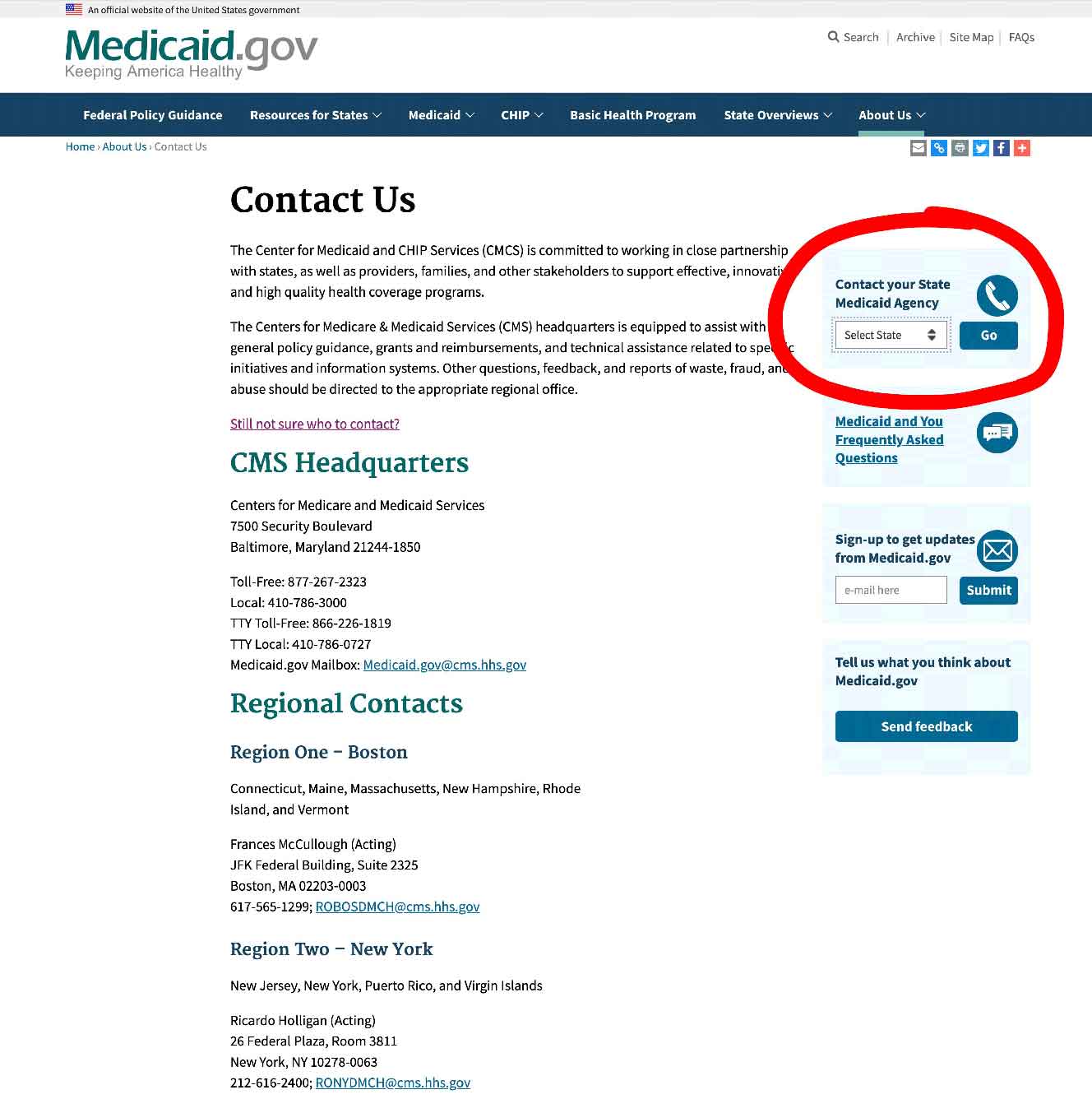
Step 2 –
Select your state and click on “GO” – this will take you to your State Medicaid Agency and all their contact info.
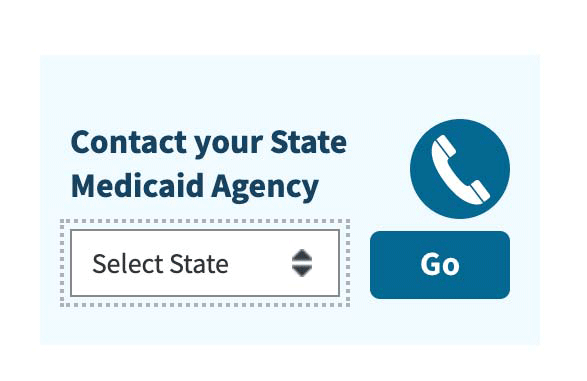
State Funding Assistance
Assistive Technology Projects
State Assistive Technology Projects are designed to increase access to assistive devices (synonymous with DME for our purposes) in the home.
These projects are funded through a National Assistive Technology Grant, and their primary focus is on providing this access to the elderly and the disabled.
Most states will have a number of online services, which include an online equipment exchange where state residents can buy, sell and donate equipment.
To use an exchange, you only have to visit the site and register as a user.
There are also recycling programs for “gently used” assistive devices and durable medical equipment in most states, which is either given to people in need, or sold at very low cost.
In some cases, the State Assistive Technology Projects partner with non-profits and local community groups already established in the community, to improve upon the provision of their services.
If you go to your State Assistive Technology Project website, you should find all the information you need to help you.
To find the projects in your state click here.
Step 1/
Pick your state on the map or the drop down menu, and click on “Go to state”
– I selected Florida for this example
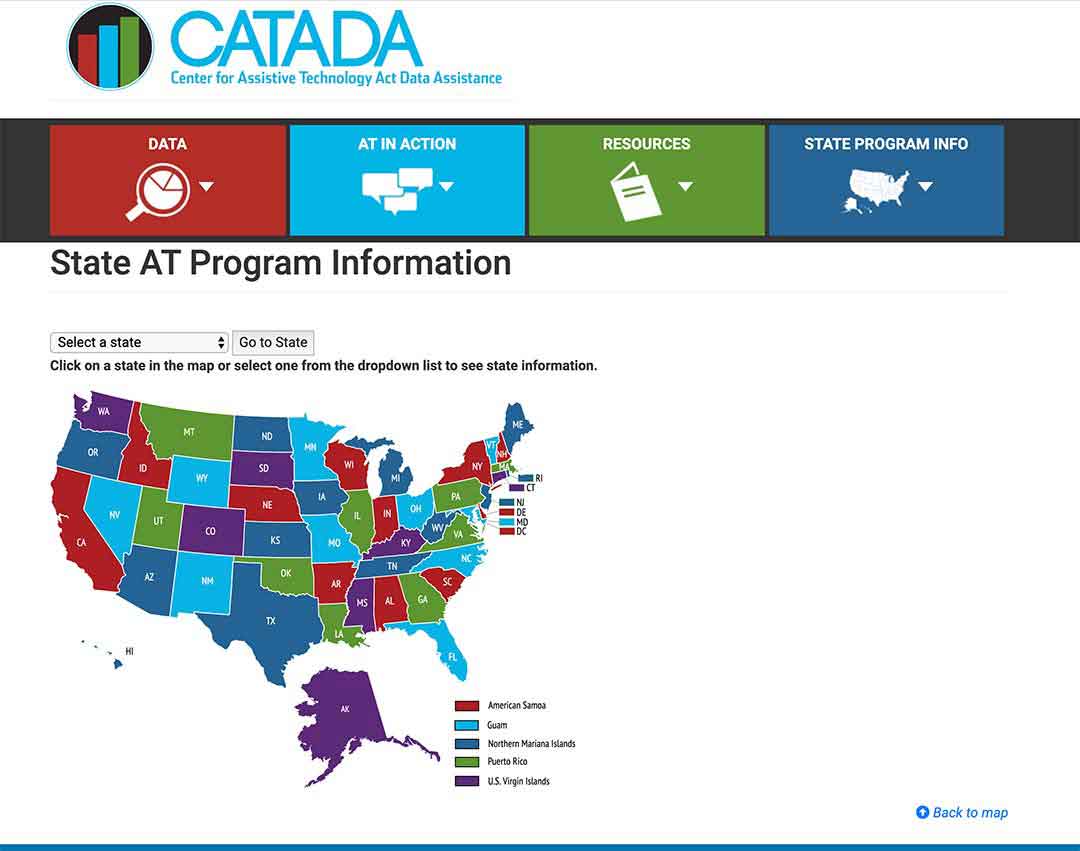
Step 2/
Click on the link “Program Title” – for my example, I outlined it in red.
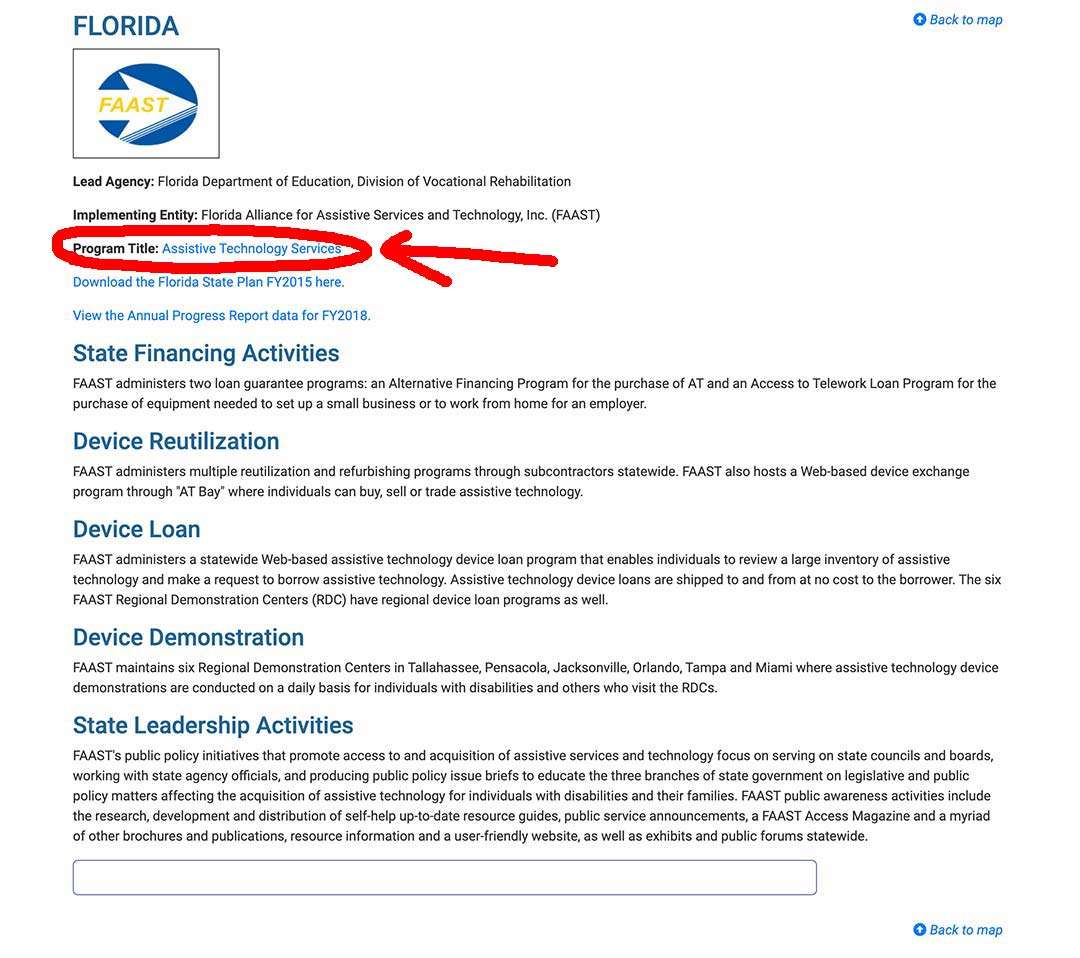
Step 3/
The AT Project state website will come up, and you can sign up, or use their contact info.
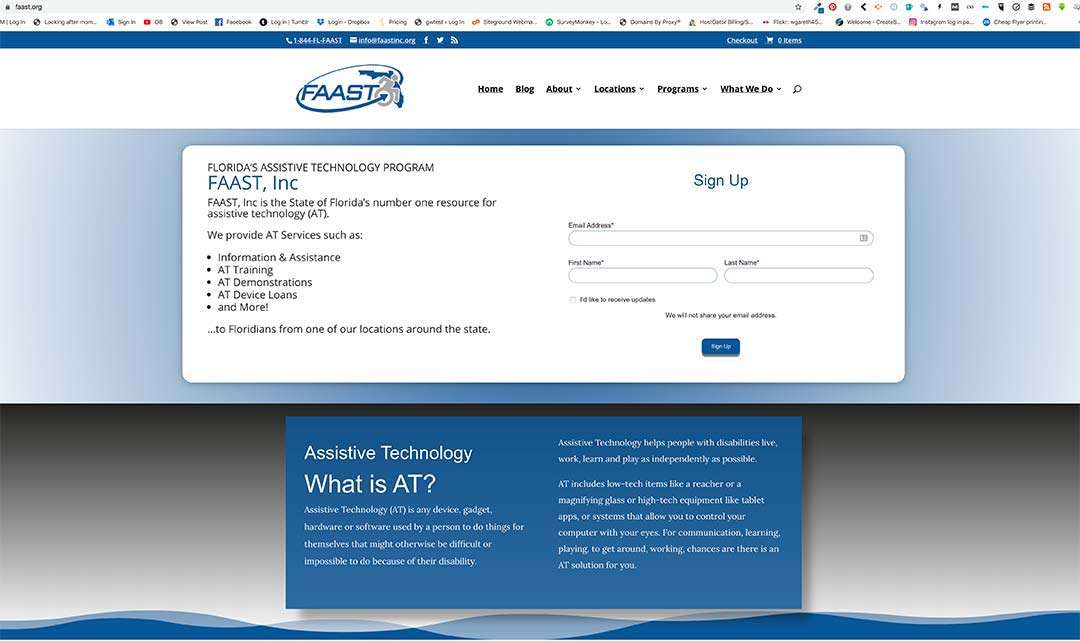
State Financial Assistance Programs
There are non-Medicaid Financial State Assistance Programs available to the elderly who don’t qualify for Medicaid.
The goal of these programs is to help the elderly to remain in their own homes.
Electronic equipment is allowed, including medical alert systems.
Does Tricare cover medical alert systems
Tricare is health insurance for US service men and women, retirees and their families.
Tricare does not cover medical alert systems as they are not medical equipment. The guidelines are very much the same as those of Original Medicare.
TRICARE covers DME that:
Improves, restores, or maintains the function of a malformed, diseased, or injured body part, or can otherwise minimize or prevent the deterioration of the patient’s function or condition
Maximizes the patient’s function consistent with the patient’s physiological or medical needs
Provides the medically appropriate level of performance and quality for the medical condition present
Is not otherwise excluded by the regulation and policy
The source of this information is on the Tricare website here.
There are though other Veterans benefits which you will find which will cover a medical alert system.
Help for Veterans
If you are eligible for, or receive, a VA pension, and you need the aid of another person with your daily activities, or if you are simply housebound, you may be eligible for extra payment.
The following payments are made in addition to the regular monthly pension.
You are not allowed to receive the two additional payments at the same time – only one, plus your regular pension.
Aid & Attendance
If a person requires someone to help with the basic daily activities of everyday living, they may qualify.
Housebound
The benefit may be added to a monthly pension if the person is housebound because of a permanent disability.
Veteran Directed Care Program
Previously known as the Veteran-Directed Home and Community Based Services, this program is there to help all veterans at risk of nursing home placement.
This quote is taken from here on the va.gov website –
“Veteran-Directed Care is for Veterans who need skilled services, case management, and assistance with activities of daily living (e.g., bathing and getting dressed) or instrumental activities of daily living (e.g., fixing meals and taking medicines); are isolated or their caregiver is experiencing burden.”
The Veteran Directed Care Program (VDC) has eligible veterans managing their own budget, deciding on their own what products and services best suit their needs, and who they hire providing those.
As such, if you qualify for this program, you should be able to have a medical alert system.
The VDC program is available through the Veteran’s Health Administration’s Office of Geriatrics and Extended Care Services.
Veteran’s Affairs Medical Centers (VMACs) decide on eligibility and make the referrals to the Aging and Disability Network Agencies.
The Aging and Disability Network helps veterans and their families with all the logistics of setting up the different services they require.
To find out about the availability of VDC’s where you live, you should contact VMAC’s for more information.
You can find your nearest VA location here.
Free medical alert systems
Assistive Technology Services offer a free medical alert devices to people in need
Assistive Technology Services, who sell a range of medical alert systems, have a project providing medical alert devices to people who really cannot afford one.
The system works through a system of donations made to Assistive Technology Services, and to which the company then adds their contribution.
For each $1 donated by a private person, the company will donate $1.50, and so $2.50 goes into the pot to give someone a free unmonitored medical alert system.
To apply to be a recipient, you can go to the link below –
https://assistivetechnologyservices.com/applyforfreemedicalalertsystem.html
Disclaimer: I have no links whatsoever with this company, and have never discussed any of this with any member or representative of the company. I came across this on their website while doing my research. The company sells a range of unmonitored medical alert systems and devices.
Free mobile medical Alert for veterans
LiveLife LLC offer a free medical alert device to Veterans, LiveLife Mobile Alarm.
This is an unmonitored mobile pendant alarm which sends alerts to the users contacts in the event of an emergency.
The device has GPS Location Tracking, GEO Fencing, Automatic Fall Detection, Two way Talk communication and an SOS button.
If you are a veteran, you can follow this link to their website to get the free medical alert here.
Medical alert systems for seniors with no monthly fee
Non-monitored Medical Alert Systems
You just pay the equipment cost as there is no monitoring.
If you get a system for a landline, it uses the landline without any extra charges for that.
If it is a cellular system, you will have to pay for some cellular coverage, because the system have to have a connection to the cellular network, such as a SIM, and this won’t be free.
In an emergency, if an alert is signaled, the devices will call the phone numbers that you added into the system as contacts.
The number of emergency contacts you can add to a device varies between 3 and 10.
Typically, you would be entering the telephone numbers of caregivers, family members and neighbors.
In an emergency, the medical alert device will dial through the emergency contact numbers, just until one of the contacts answers their phone.
Not all system devices allow the user to talk through them (known as Two-Way Talk), and will send a text message alerting the emergency contacts to the emergency.
The systems with Two-Way Talk let you talk through the actual device, or button, with your emergency contacts.
Devices which just send text messages have cheaper cellphone network charges than devices which use Two-Way-Talk.
The two types of non-monitored medical alert systems –
In-home medical alert systems
These can use either a landline or a cellular network to make their emergency calls.
The systems will have a base unit, and alert buttons which can be worn on the wrist, or around the neck.
In an emergency, the user will press their help button, and this will send a signal to the base station to start making the calls to your preferred emergency contact numbers.
Some systems have the option of Automatic Fall Detection, which means that in the event that there is a fall and the user cannot press their help button, the system sends the alert automatically.
Also, do realize that Fall Detection is not 100% fail proof, and some falls are not detected.
40% of falls are sliding or slumping falls, which are difficult for Fall Detectors to identify.
Fall detectors rely on impact and speed for detection.
Mobile medical alert systems
Mobile medical alert systems are a little more expensive than in-home systems, as they work on cellular networks.
It will cost to send the alerts, and for any conversations the user has on the device with their contacts, as the mobile devices use a SIM card.
This extra cost is not likely to be more than a few dollars a month.
Because the mobile systems are for anywhere the user goes, they should come with GPS tracking.
This GPS tracking is used to instantly find the user’s location, which will be texted to contacts in an emergency.
The mobile devices will all have an emergency button on the device itself, which is pressed when there is an incident and assistance is required.
The system will either send text messages, have Two-Way Talk which will connect you when a contact answers their phone,
or will have automated voice messages saying there is an emergency and will then send your location in a text form to the contact who answers.
Some mobile devices come with Automatic Fall Detection as part of the basic system, and others offer it as an add-on for a few dollars more
Examples of non-monitored medical alert systems with no monthly fees
I have a long article all about 48 different systems for monitoring elderly parents from afar, in which I outline the options for elderly monitoring available today, and many of the devices used. You can read that here.
Here are some examples of non-monitored medical alerts systems with no monthly fees !
SureSafe
- SureSafeGO Anywhere -there is a monitored and a non-monitored version
Logic Mark
- Guardian Alert 911
- LogicMark Freedom Alert Emergency System
Assistive Technology Systems
- Personal Assistance Voice Dialer II – Amplified medical Alert Telephone with waterproof pendant
- Touch N’ Talk Tow-Way Voice Pendant Emergency Alert
- SkyAngel911 Mobile Emergency Alert System
- Automatic Fall Detection with Two-Way Voice Pendant
- Help Dialler with two Panic Buttons
321 Alert
- Medical Alert A100
- Medical Alert A110
- Medical Alert A120
LifeLink
- Mace Alert 911
LifeLink Response
- Medical Alert System for Seniors, LLR -100
- Medical Alert System for Seniors, LLR -110
- Medical Alert System for Seniors, LLR -120
- Medical Alert System for Seniors, LLR -500
Home8care medical Alert
- Home8Care Medical Alert
VTech
- VTech CareLine Home Safety Phone System and Alert Pendant Button
Athena Empowerment Technology
- App – it turns your smartphone into an alert device
V.ALRT
- V.ALRT Wearable Button – Works with your smartphone
LiveLife
- LiveLife Mobile medical Alert with Auto Fall Detect, 2 Way Voice & GPS
Summary
Medicare Part B does not give coverage for a medical alert system, as it is not medical in nature.
Remember to always ask the DME supplier if they are a Medicare-enrolled “Participating” Supplier who accepts “assignment”.
Medicare Advantage though is a very different case, and numerous plans offer medical alert systems as part of their package, especially since the changes as of 2019 in the benefits that Advantage plans may offer.
Medicaid, state programs and waivers, Financial Assistance Plans, and Veterans Benefits, in many cases will cover a medical alert system if it is deemed to be medically necessary.
State Technology Projects will also help to provide the elderly and the disabled with assistive technology devices, including medical alert systems.
As well as having recycling centers, the State Assistive Technology Projects have online exchanges, where you can find much free, or cheap, gently used equipment.
I’m Gareth, the author and owner of Looking After Mom and Dad.com
I have been a caregiver for over 10 yrs and share all my tips here.

